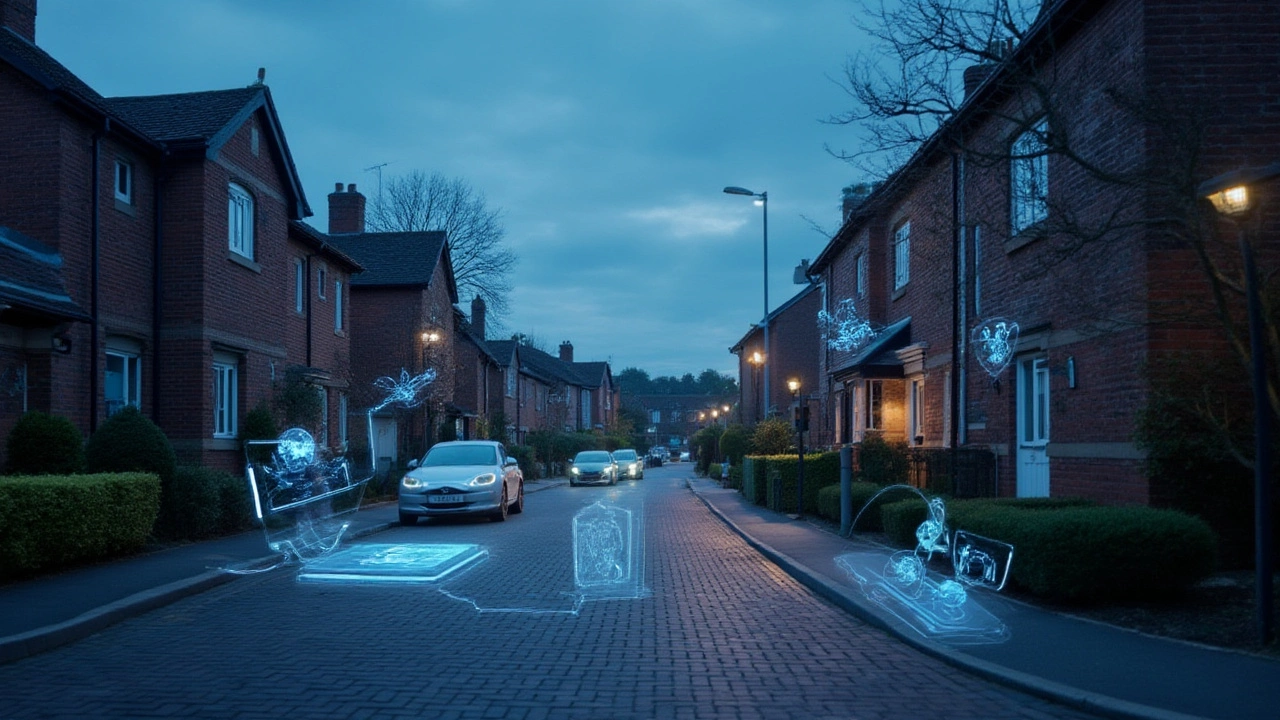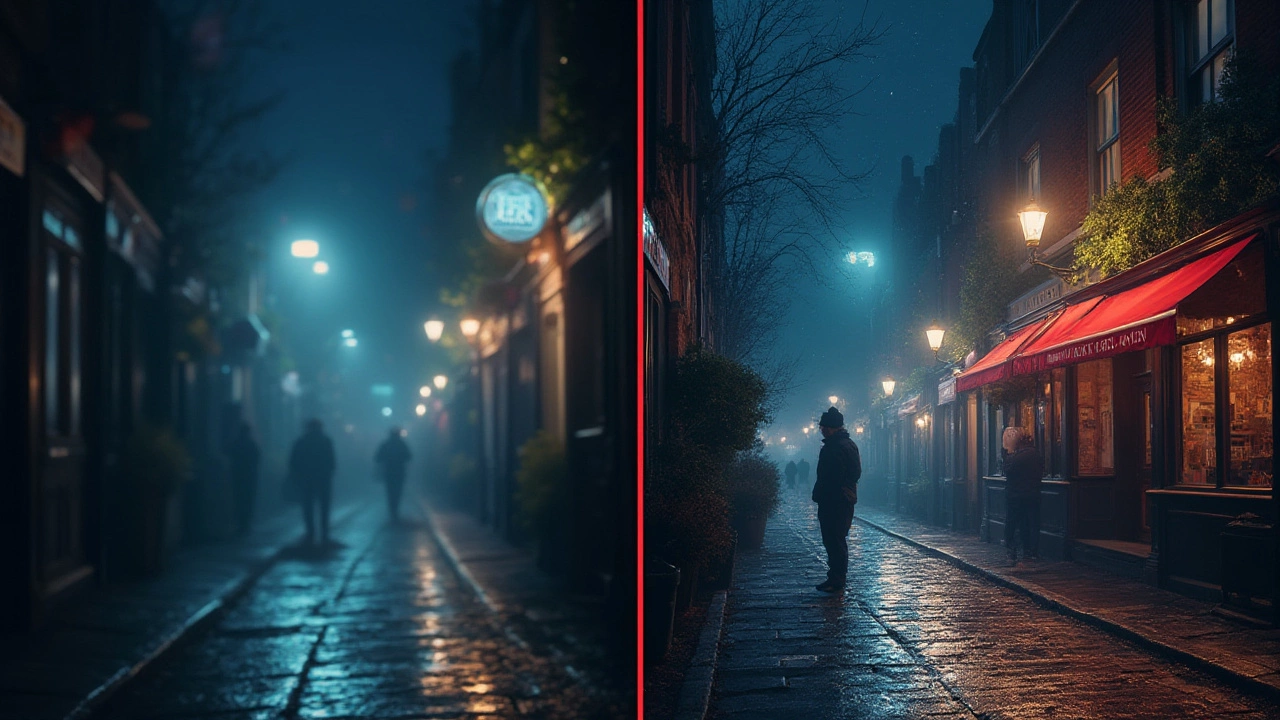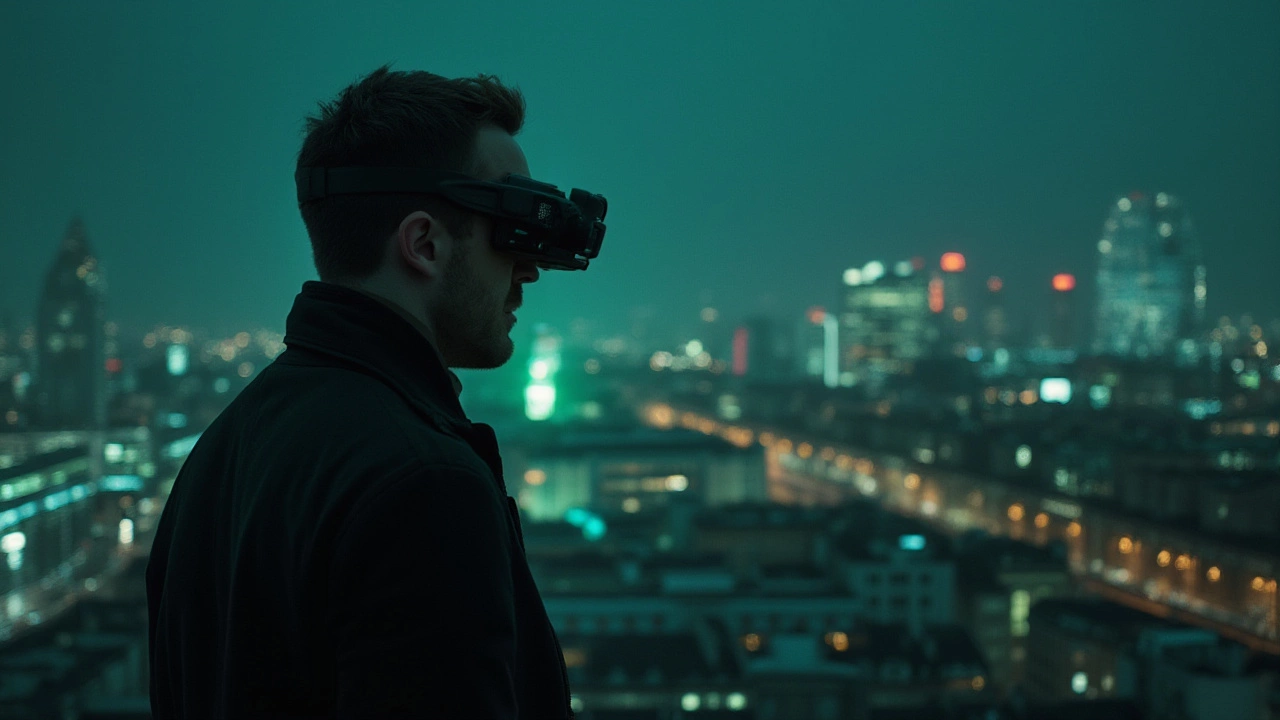Crack open the pitch-black world after midnight, and suddenly a new universe appears—one most people will never see. But security pros, homeowners, and even late-night wildlife watchers have one trick up their sleeve: night vision. Whether you’re on the hunt for the latest security tech or you’re just tired of guessing what’s rustling around outside your window, pinning down the best night vision isn’t as easy as it sounds. There’s a maze of gadgets from old-school green-tinted tubes to sci-fi looking digital sensors, and the hype never seems to end. Hold tight, because this isn’t just about seeing in the dark—it’s about finding tech that actually lives up to the promise.
How Night Vision Works: Beyond Green Screens
Night vision isn’t magic, although it sure feels like it sometimes. Ever notice how movie spies always have those glowing green goggles? That’s called image intensification. But today, it’s way more complicated. The basics are this: true night vision comes in three flavors—image intensification (that classic green view), thermal (seeing heat signatures), and digital. Here’s where things get interesting. The green you see isn’t for style; human eyes can spot more shades of green than any other color, giving you extra detail when you’re in complete darkness.
Standard image intensifier tubes take in tiny bits of light—think moonlight or starlight—and crank it up so it’s visible. The tech has been around since World War II, but it’s evolved a ton. Then there are thermal night vision cameras, which ditch light altogether. They pick up invisible heat waves, which can actually catch things hiding behind shrubs or in total dark, since everything above absolute zero gives off some kind of infrared heat. Lastly, digital night vision uses sensors like those in your phone camera, but way more sensitive, then enhances what the lens sees. One bonus here is being able to record or stream footage, something classic green tubes can’t do. Understanding these basics is your first step to picking what’s right for you.
Comparing the Types: Tubes, Thermals, and Digital Demons
So what’s better: the timeless tube, the high-tech heat seeker, or the all-digital performer? Here’s what matters. Best night vision for pure clarity in almost-dark always starts with classic image intensifiers, especially military-grade Gen 3. These tubes get close to seeing in ‘dim daylight’ even with barely-there starlight. Police and security guards swear by them, but prices can be eye-watering—some run over $5,000. They’re rugged, have almost no lag, and the battery lasts ages. Downsides? You can’t record easily, and if someone shines a flashlight, you’re temporarily blinded.
Thermal imagers go a different route. Where tubes stop cold at smoke, fog, or even thick bushes, thermal cameras cut right through. They work rain or shine. They don’t show you a scene as you’d see it with your eyes—instead, you get ghostly heat outlines. Think of those predator-vision scenes in action flicks. Thermal’s huge for spotting intruders hiding behind trees, vehicles, or in shadows. Firefighters and border patrol love them. They just have two big catches: price (some models are as expensive as decent motorcycles) and not showing fine detail. You’ll see a critter, just not if it’s your neighbor’s cat or a raccoon.
Enter digital night vision. This tech’s shut the price gap and made night-watching accessible. Many modern home security cameras, like the Arlo Pro 5 or Google Nest Cam, use highly sensitive digital sensors that switch to infrared LED lighting at night. That soft red glow? That’s IR light invisible to you but not to the camera. Digital devices are way easier to use, can record and stream, and sometimes work both night and day. They’re often less expensive and good enough for spotting faces at your front door or catching who’s poking around the backyard. If you want color at night (and that’s possible now, thanks to sensors like Sony’s STARVIS line), digital is your ticket. But, old-fashioned tubes still edge out digital for raw sensitivity—just barely.

What Matters Most: Range, Resolution, and Real-World Reliability
The specs on the box can be confusing, but they do matter. Range is the big one. Low-end night vision camera systems might promise ‘30m night vision,’ but only show blobby shapes much closer. Premium devices, especially those with high-power IR illuminators or large lenses, can hit 200m or more without breaking a sweat. Some military kit reaches nearly a kilometer, although that’s way overkill for most homes.
Resolution matters a lot. You want to be able to recognize a face and not just see a glowing mop. High-res digital cameras (think 4K security cams) can do wonders—during one 2024 test by PCMag, a consumer-grade Lorex N843A82 recorded license plates 85 feet away with crisp clarity. But don’t let megapixels fool you: IR illumination and sensor quality both matter more in the real dark.
Reliability doesn’t always show up on a spec sheet. Battery life can vary wildly—some portable night vision goggles last 4-5 hours, while fixed security cameras run 24/7 plugged in. Weather sealing is huge if you’re putting it outdoors. Look for at least an IP66 rating; rain, snow, and dust won’t take it down. And don’t underestimate set-up hassle. Wireless models are popular for good reason—nobody loves running cable in the attic at 11 pm.
Best Night Vision Picks for Home and Yard
So, what’s the smart move for 2025? If you’re guarding your home, a solid digital security camera with great night vision wins every time. The Arlo Ultra 2, for example, has color night vision thanks to full-color CMOS sensors and super-bright built-in LEDs. You’ll see details like hoodies or backpacks clearly, even without any porch light. Another standout is the Reolink CX410, which combines ultra-sensitive STARVIS sensors with motion-triggered recordings—no more scrubbing through hours of darkness. Both can easily stream to your phone and send instant alerts if motion is detected.
If budget’s tight, Wyze Cam v4 made a splash in early 2025 with surprisingly clear night vision for under $60. Its IR range and AI detection punch well above its price. For folks on large properties or wanting to see far-off corners, the Hikvision DS-2CD2087G2-L offers 4K video, a 50m IR range, and tough outdoor durability. It’s popular for small businesses and rural homes. All these models come with user-friendly apps so you can check in without getting out of bed if your alarm chirps at 3AM.
For handheld options, look at the AGM PVS-14 (military-grade tube, pricey, legendary in performance), or the FLIR Scout TK2 (handheld thermal vision, compact and reliable, picks up that skunk dashing behind your shed). The AGM is what you see in movies—serious gear, but overkill for just wanting to spot raccoons in the yard.

Troubleshooting and Tips: Getting the Most Out of Night Vision
Even good night vision can let you down if you don’t use it right. Pointing a night vision camera out a window? You’ll get more glare from your own glass than anything outside—IR light bounces right back at the lens. Mount the camera outdoors, angled downward, away from shiny surfaces. Keep the lens clean; dust and fog mess with sensitivity more than you’d think.
Light comes in handy. Yes, you’re buying night vision because it’s dark, but just a sliver of real light—think dim porch lights or solar pathway LEDs—helps digital sensors work better and gives you color, not just gray or green. If you want to step up, try a camera with smart IR, which automatically dials back its brightness so faces don’t get blown out when someone gets close. Trade secret: some devices let you eco-hack light pollution. A carefully aimed flashlight (with red gel filter) or a couple of tiny IR floodlights will supercharge even basic night cameras, letting you see further and crisper without turning night into a beacon.
Keep software up to date. A lot of people ignore this, but manufacturers are always patching holes and improving image quality via firmware. Enable privacy settings so your video stream isn’t showing up online—yep, people still get their home cams hijacked. For battery-powered models, a quick tip: rechargeable lithiums survive chilly nights much better than regular alkalines. If you’re heading into really cold weather, stash a couple in your pocket and swap out as needed.
Don’t just rely on specs and ads alone. Check community forums or Reddit, where people post unfiltered sample footage from real homes and yards. You’ll get a true feel for what a specific model can (and can’t) do. Want to spot a fox raiding your trash, or track every car creeping down the block? Match your expectations to the device’s real strengths, and you’ll never get left in the dark.

